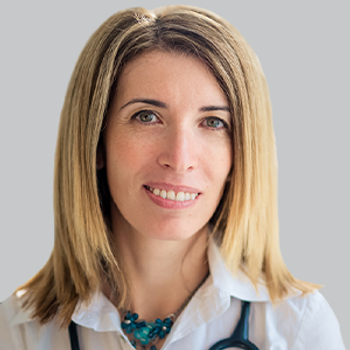
Jessica Neil, PA, on the Evolution of Patients With Headache

Key Takeaways
- Accurate identification and personalized care are crucial for managing diverse headache types, including primary and secondary headaches.
- Jessica Neil, PA, will present on evaluating headache patients, focusing on history-taking and recognizing red flag features.
A physician assistant who specializes in neurology previewed her upcoming presentation on evaluating patients with headache at the 2025 Baptist Miami Neuroscience Symposium.
Headache is among the most common medical complaints and can arise from a variety of causes, including stress, dehydration, or underlying medical conditions. With so many classifications of headache, many headache specialists have focused on accurate identification and personalized care that can differ from person to person.
The
In this conversation, Neil, a physician assistant at
NeurologyLive®: For those that may not be present, can you provide an overview of your presentation?
Jessica Neil, PA: One of the main complaints we see in the neurology clinic, and just in general, is headache and headache disorders. The goal of the presentation is to, first off, discuss the different types of headache; primary headache, and secondary headache. We’ll go over what that means and how to start thinking about patients with headache and asking the right questions to understand what they’re dealing with and what they’re struggling with. Then I’ll go into the 2 main types of headache we typically see, and just how to approach headache overall. I’m trying to appeal to clinicians, but also to nurses, medical assistants, and anyone in the medical field or just interested in headache.I’ll mostly be talking about migraine headache and tension headache.
What would you say are the main takeaways or highlights of your presentation?
The main highlight is about how to take a good history of present illness in a patient who’s coming in with headache, and then using our current diagnostic criteria to help guide you toward a diagnosis. We’ll touch a little bit on treatment, but treatment is pretty broad. So, the main takeaway is how to approach these patients and how to get the information you need for diagnosis.
Are there any examples of tough cases that could stump a headache specialist?
There are plenty. A common issue we run into is that a patient doesn’t always have just 1 type of headache; they could have multiple types. Number 1 is patient education: making sure we’re teaching our patients about the different types of headache they might be experiencing, how and when to treat them, and how to tell them apart. Lifestyle changes can also play a big role: sometimes we’re focused more on managing symptoms rather than curing headache disorder completely.
So, I’d say the tough cases are those with multiple headache types. One thing I’ll also stress in the presentation is being alert for any change in the headache pattern or for what we call red flag features — something that might point to another cause, like a tumor, vascular issue, or other underlying problem.
Where do you see care for headache and migraine going in the next 5 years?
Thankfully, the world of headache disorders has made a lot of progress over the last several years. We now have medications that target calcitonin gene-related peptide, which is a major driver of migraine headache. They’re constantly working on newer versions of those drugs, and they’ve been working really well for a lot of our patients.
I’m also hoping we’ll start understanding tension-type headache better — their pathophysiology and how we can improve treatment for those patients, too.
Is there anything else you’d like to say to other clinicians about your presentation?
My main thing is that I’m just trying to spread information for clinicians. The presentation is kind of a quick overview — how I personally approach headache — but everyone can have their own style, of course.
A lot of nurses, medical assistants, and even students attend the symposium, so I want to make sure they can also understand the different headache types. I’m really trying to reach a broad audience and raise awareness. Honestly, it’s tough — I only have about 15 or 20 minutes to cover such a huge topic! You could easily have an entire conference just on headaches. But since this symposium covers so many different topics, I’m just trying to fit in as much as I can.
Transcript was edited for clarity.
Newsletter
Keep your finger on the pulse of neurology—subscribe to NeurologyLive for expert interviews, new data, and breakthrough treatment updates.




















